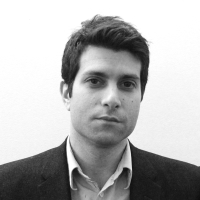A New York police officer will not face criminal charges over the death of Eric Garner, an unarmed black man who died shortly after being arrested, the Daily News and New York Times have reported.
Garner died in July after a white police officer placed him in a chokehold banned by department regulations. After video of Garner’s death emerged, it quickly became a high profile case in New York but was overshadowed in the national media by the shooting of Michael Brown, less than a month later, in Ferguson, Mo.
Following Garner’s death, a grand jury was convened in September to determine whether there was enough evidence to warrant a criminal trial of the police officer at the center of the case, Daniel Pantaleo. The jury met in secret for months gathering testimony from witnesses, including from Pantaleo.
Pantaleo, who is white, used a chokehold to subdue the 43-year-old Garner, who was accused of illegally selling cigarettes on the street. A video of the confrontation shot by a bystander shows Garner surrounded by a group of police officers. “Every time you see me you want to mess with me. I’m tired of it. It stops today!” Garner says to the officers surrounding him.
Later in the video, as Garner protests and refuses to be handcuffed, Pantaleo puts the 400-pound man into a chokehold and, along with three other officers, wrestle him to the ground. The video shows Garner screaming, “I can’t breathe! I can’t breathe!” as he’s being subdued.
Police on the scene called paramedics but Garner died a short time later.
Photos: Scenes From the Eric Garner Protests

Pantaleo’s use of the chokehold was a central issue in Garner’s death. The restraint is banned according to NYPD regulations but it is not illegal. Though the chokehold contributed to Garner’s death, according to the medical examiner involved the case, the move does not, by itself, break the law.
Aside from the legality of the chokehold, police critics held up Garner’s death as evidence of the over-policing of minority neighborhoods. Though violent crime in New York has reached historic lows, police critics argue that the drop has been bought by violating the civil rights of minorities through methods that subject black and Latino New Yorkers to routine harassment and violence at the hands of the police.
After Ferguson, the grand jury process itself became a matter of debate. Police officers are almost never indicted in grand jury proceedings compared to the general population. No officer has been indicted in New York since 2012 when Richard Haste was charged with manslaughter for the shooting death of Ramarley Graham in the Bronx. That indictment was then overturned by a second grand jury that decided not to bring charges against the officer.
Before Wednesday’s announcement, tensions over the case had simmered in New York without erupting. While the grand jury decision in Ferguson led to violent demonstrations and looting in the Missouri city and other parts of the country, the response in New York was more contained.
Last week, protests in the city briefly shut down major bridges and attempted to disrupt the annual Thanksgiving Day Parade but never gathered more than 1,000 demonstrators and resulted in relatively few arrests.
On Tuesday, before the grand jury decision was released, Police Commissioner William Bratton addressed the department’s preparation ahead of the announcement.
“I think that there will be an ability that people will get to have their voice heard without disturbance,” Bratton said. “We, on the other hand, on the police side, will naturally gear up to deal with any potential contingency that might occur.”
In an appearance Wednesday morning on CBS, Bratton focused on what he called the “professional agitators” within the protests. “The organizers of these demonstrations, their intent is to have orderly demonstrations, they don’t want violence, they don’t want vandalism. But it’s the disorganized that would be our concern, or the professional agitators, that we have no shortage of here in New York,” Bratton said.
Last week, the police had relatively few confrontations with protesters. Police were giving them “a little breathing room,” according to Bratton. “As long as they remain nonviolent,” he said last week, “as long as they don’t engage in issues that cause fear or create vandalism, we will work with them to allow them to demonstrate.”
That approach appeared to work relatively well, leading to little violence and few arrests. But with new protests growing larger in the wake of the Garner decision, the police “breathing room” approach may be discarded in favor of a more aggressive effort to break up demonstrations before they grow too large for police to contain or quickly disperse.
On Wednesday, Mayor Bill de Blasio, issued a statement about the grand jury’s decision. The statement expressed his sympathies with the Garner family and declared that, “Garner’s death put a spotlight on police-community relations and civil rights—some of most critical issues our nation faces today.” But de Blasio also addressed protesters directly with a mixture of sympathy and warning.
“We trust that those unhappy with today’s grand jury decision will make their views known in the same peaceful, constructive way,” he said, before stressing the police reforms he has overseen.
“We all agree that demonstrations and free speech are valuable contributions to debate, and that violence and disorder are not only wrong—but hurt the critically important goals we are trying to achieve together.”





